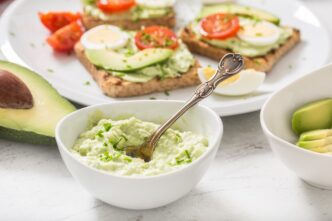Food is an integral part of our daily lives, but the fascinating stories woven into the fabric of our kitchens often go unnoticed. From the surprising origins of your favorite comfort foods to the peculiar scientific classifications of fruits and vegetables, the world of gastronomy is full of astonishing revelations that can spark curiosity and intrigue. Here are ten unbelievable food facts that are absolutely true, each one a testament to the wonders hiding in plain sight in our pantries and dining tables.
1. The Meat Medley in Fast Food Burgers
Next time you bite into a fast-food burger, consider its origin: the beef may not come from just one cow but potentially from dozens, or even hundreds, blended together to create a uniform taste. This impressive feat of food engineering ensures that every burger maintains that signature flavor, regardless of when or where it’s purchased.
2. Berries: A Botanical Twist
In the world of botany, not all fruits labeled as berries actually qualify. Commonly thought of as berries, fruits like blackberries and raspberries don’t meet the official criteria. Interestingly, bananas, avocados, and even cucumbers do! True berries are characterized by growing from a single flower with a single ovary and containing multiple seeds, making the banana a delightful example of this classification.
3. Honey’s Timelessness
Honey is often referred to as a forever food, and for good reason. Archaeologists have found pots of honey in ancient tombs that have remained perfectly edible for over 3,000 years. This remarkable longevity is attributed to honey’s low moisture content, natural acidity, and the presence of hydrogen peroxide, making it an inhospitable environment for spoilage-causing bacteria.
4. The Mystery of Betty Crocker
The beloved figure of Betty Crocker, a staple in many kitchens thanks to cookbooks and advertisements, is not based on a real person. Instead, she is a fictional character who has been embodied by numerous women over the years, becoming one of the most iconic personas in culinary history.
5. Floating vs. Sinking Fruits
A rather quirky fact about lemons and limes is their buoyancy in water. Lemons tend to float due to their larger size and porous rinds, while denser limes sink. This delightful distinction showcases how different fruits can have similar appearances yet vastly different physical properties.
6. Ketchup’s Medicinal Past
Although today we mostly enjoy ketchup as a condiment, its history is rooted in medicine. In the 1830s, ketchup was promoted as a digestive aid by an Ohio physician who created tomato-based ketchup pills to treat various ailments. While the idea eventually fell out of favor, it is a reminder of how food perceptions evolve over time.
7. The Aging of Cheese
Cheese is a living product that continues to transform as it ages. As bacteria and molds work their magic, they break down proteins and fats, leading to more robust flavors and aromas. This biological activity means that when you savor a strong cheese, you’re indulging in a product that is still very much alive.
8. The Truth About Red Coloring
Many red yogurts, candies, and drinks owe their vibrant color to carmine or cochineal extract, derived from dried and ground cochineal insects. While this natural dye has been used for centuries, the realization that our favorite treats may be colored with bug-based ingredients can certainly come as a surprise.
9. The Role of Air in Citrus Fruits
Did you know that the structure of citrus fruits can affect their buoyancy in water? The air pockets within lemons and their thicker rinds allow them to float, while the denser limes lack this feature, sinking instead. This simple experiment highlights the hidden complexities in what we often take for granted.
10. The Flavor Chemistry of Food
Food flavor is not just about taste; it’s also a product of chemical reactions. Factors such as aging, processing, and even the microorganisms involved all contribute to the distinct flavors we experience. Understanding this chemistry reveals not only the artistry of cooking but also the science that underpins every bite.
As we explore the food that fills our plates, these unbelievable facts remind us of the intricate connections between nature, science, and culture that shape our culinary experiences. Each meal we prepare is a blend of history, science, and a dash of magic, inviting us to look deeper into the ordinary and discover the extraordinary waiting within.
The Intriguing Impact
- Insights into botanical classifications of fruits may enhance educational content in schools, fostering a deeper appreciation for plant biology and agriculture.
- Awareness of food origins and production processes can encourage consumers to make more informed dietary choices, potentially impacting personal health and ethical considerations.
- Recognizing the hidden ingredients in foods, such as bug-based dyes, may influence consumer preferences and drive demand for alternative, plant-based colorings.
- The realization of food longevity, such as honey’s indefinite shelf-life, can affect household food storage practices and reduce waste.
- Understanding the historical use of foods like ketchup for medicinal purposes may prompt interest in the evolving relationship between food and health.







